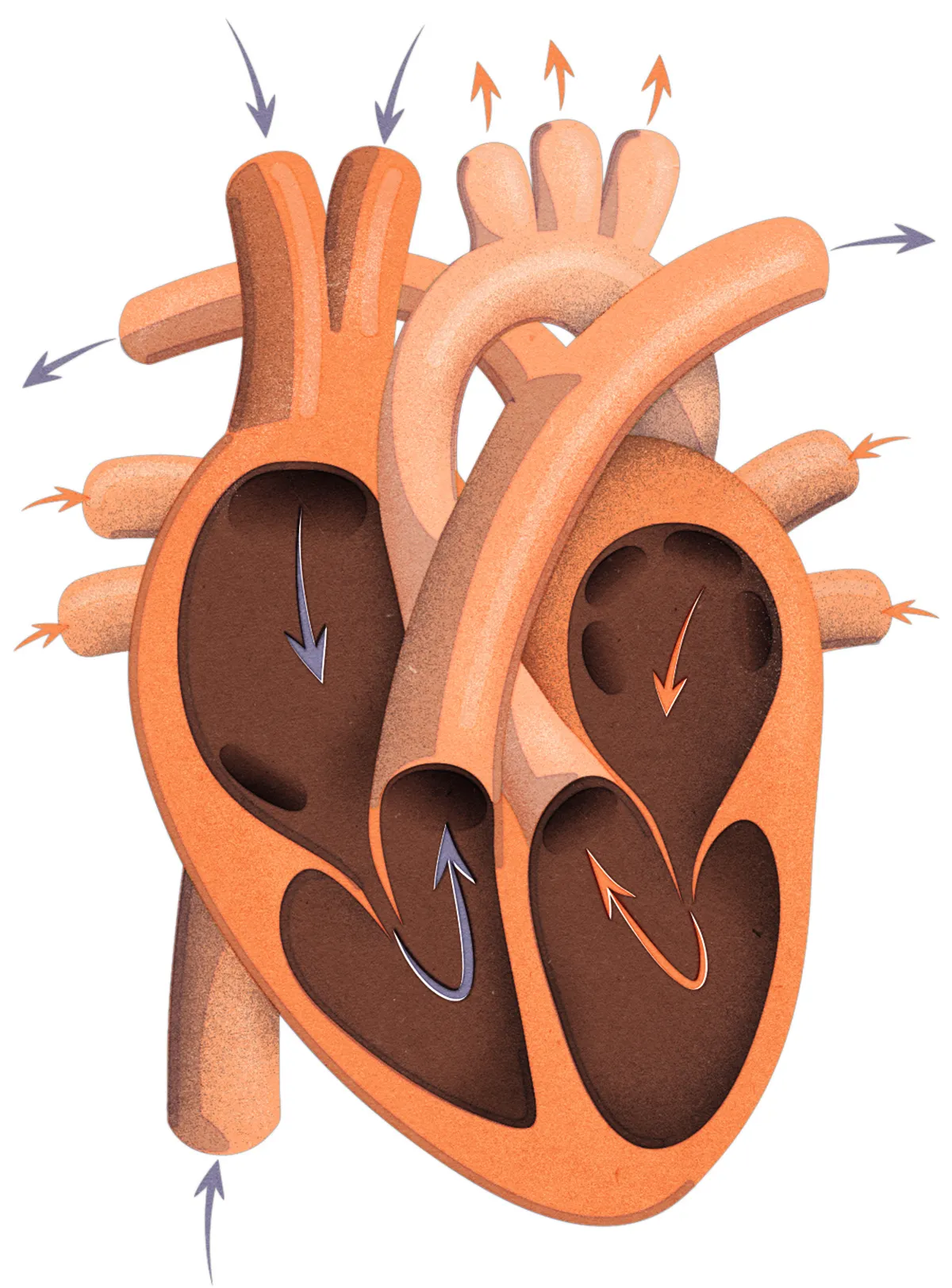A heart has four chambers in total – two upper, and two lower. The upper chambers, called the right and left atria, receive incoming blood. The lower chambers, the more muscular right and left ventricles, pump blood out of the heart.
About five litres (eight pints) of blood is being pumped around the body all the time. The heart, blood and blood vessels together are known as the cardiovascular system, and your heart doesn't tire like other muscles.
So how does this system work?

The right atrium receives blood that is relatively low in oxygen because it has been used up by the body. It passes through a valve and enters the more muscular right ventricle. When the ventricle contracts, it pumps the blood out of the heart to the lungs, so it can pick up a fresh supply of oxygen.
The blood then goes back to the left side of the heart and enters through the left atrium. It passes through a different valve into the left ventricle, and from there it is pumped out to the rest of the body to supply it with oxygen.
This whole process is known as the cardiac cycle. Contraction of the heart muscle is known as systole, and relaxation of the heart muscle is called diastole. When the valves close in turn, this causes the heartbeat.
Very rarely there are congenital defects in the wall between the two sides of the heart, such as having a ‘hole in the heart’. Mild defects often don't need to be treated, but more significant defects sometimes need surgery to correct them.
Read more: